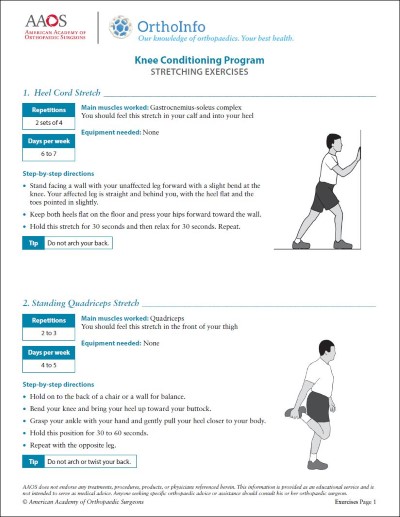Diseases & Conditions
Combined Knee Ligament Injuries
The knee is the largest joint in your body and one of the most complex. It is also vital to movement.
Your knee ligaments connect your femur (thighbone) to your tibia (shinbone) and fibula (the smaller bone in the lower leg). Knee ligament sprains or tears are a common sports injury.
In the past, injuring more than one knee ligament would put an end to future sports activities. Today, many athletes are able to return to high level sports following combined ligament injuries.
Anatomy
Three bones meet to form your knee joint: the femur (thighbone), the tibia (shinbone), and the patella (kneecap). The kneecap sits in front of the joint to provide some protection.
Bones are connected to other bones by ligaments. There are four primary ligaments in your knee. They act like strong ropes to hold the bones together and keep your knee stable.
Collateral ligaments. These are found on the sides of your knee. They control the side to side motion of your knee and brace it against unusual movement.
- The medial collateral ligament (MCL) is on the inside. It connects the femur to the tibia.
- The lateral collateral ligament (LCL) is on the outside. It connects the femur to the fibula.
Cruciate Ligaments. These are found inside your knee joint. They cross each other to form an X, with the anterior cruciate ligament in front and the posterior cruciate ligament in back. The cruciate ligaments control the front and back motion of your knee.
Description
Because the knee joint relies on just these ligaments and surrounding muscles for stability, it is easily injured. Any direct contact to the knee or hard muscle contraction — such as changing direction rapidly while running — can injure a knee ligament.
Injured ligaments are considered sprains and are graded on a severity scale.
Grade 1 Sprains. The ligament is mildly damaged in a Grade 1 Sprain. It has been slightly stretched but is still able to help keep the knee joint stable.
Grade 2 Sprains. A Grade 2 Sprain stretches the ligament to the point where it becomes loose. This is often referred to as a partial tear of the ligament.
Grade 3 Sprains. This type of sprain is most commonly referred to as a complete tear of the ligament. The ligament has been torn in half or pulled directly off the bone, and the knee joint is unstable.
It is possible to injure two or more ligaments at the same time. These combined injuries can have serious complications:
- They can disrupt blood supply to the leg.
- They can affect the nerves that supply the muscles of the limb.
- In severe cases, multiple ligament injuries may lead to amputation.
While the MCL is frequently injured in isolation and is injured more often than the LCL, MCL injuries are sometimes associated with ACL tears or other ligament injuries.
Due to the more complex anatomy of the outside of the knee, LCL tears are usually associated with injuries to other structures in the knee.
Treatment
Anyone with a suspected multiple ligament injury needs a thorough examination by an experienced physician. Depending on the injury, the orthopaedic surgeon may call in other specialists such as a vascular surgeon or microsurgeon.
In contrast to treatment for single ligament tears, surgery for combined ligament tears is often performed soon after the injury. Early surgery may be necessary to repair some of the injured ligaments that become more difficult to repair over time, or to address urgent vascular injuries. Acute surgery to address multiple torn ligaments can be complicated by arthrofibrosis (a scar forming in the joint causing stiffness). More than one operation may be required when treating multiple ligament injuries, including two stages for ligament reconstruction or a second surgery to release scar tissue.
Outcome
Outcomes for multiple ligament surgery are not as consistent as they are for single ligament surgery.
In the past, a combined ligament injury prevented people from returning to sports activities. Today, it is possible to return to high level sports, although there is no guarantee. Severe injuries associated with nerve injury may leave an athlete with permanent foot and ankle weakness that significantly impacts function.
Last Reviewed
December 2021
Contributed and/or Updated by
Peer-Reviewed by
AAOS does not endorse any treatments, procedures, products, or physicians referenced herein. This information is provided as an educational service and is not intended to serve as medical advice. Anyone seeking specific orthopaedic advice or assistance should consult his or her orthopaedic surgeon, or locate one in your area through the AAOS Find an Orthopaedist program on this website.







